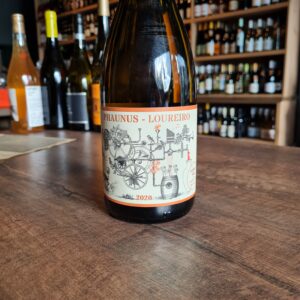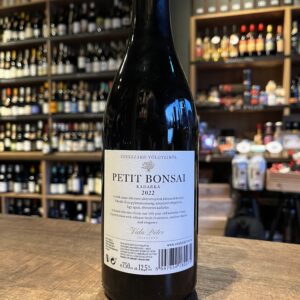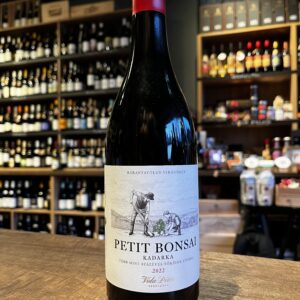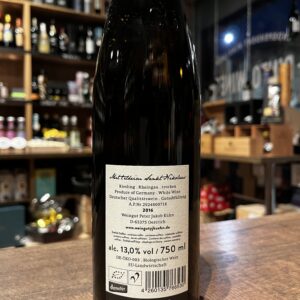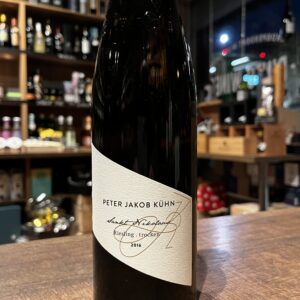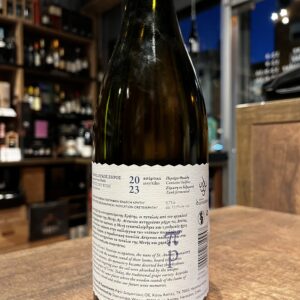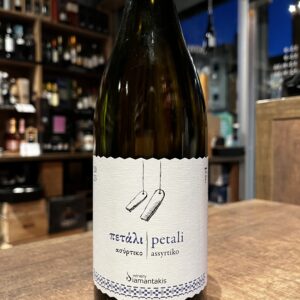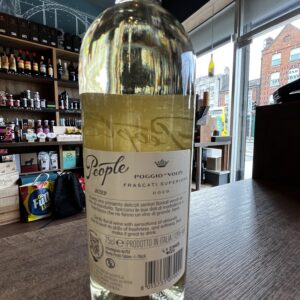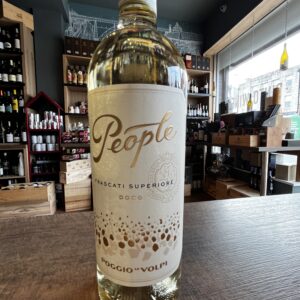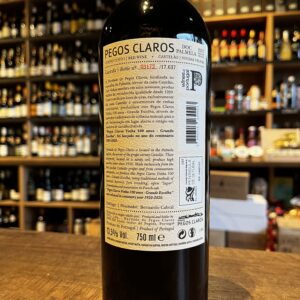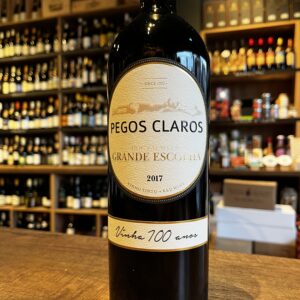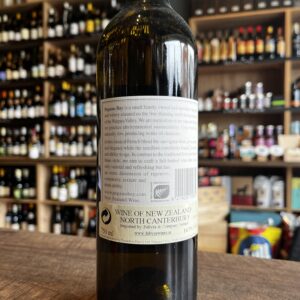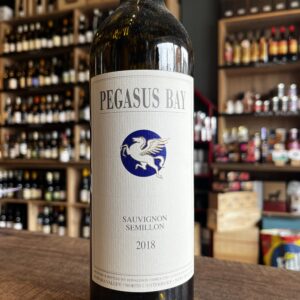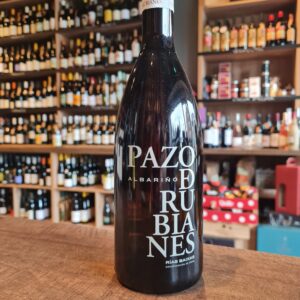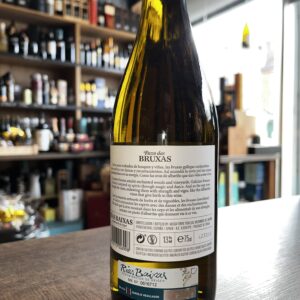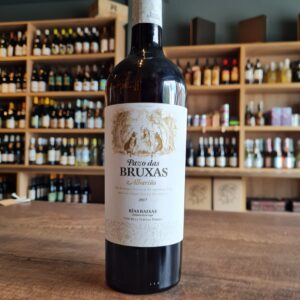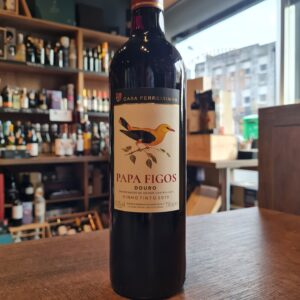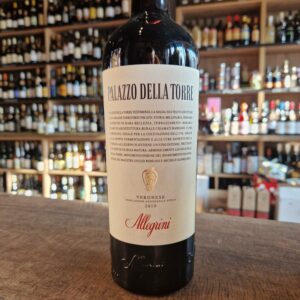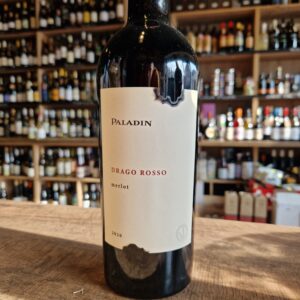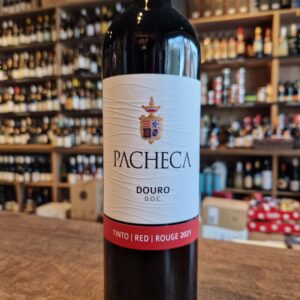-
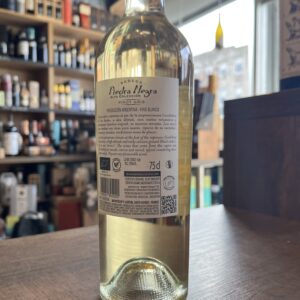
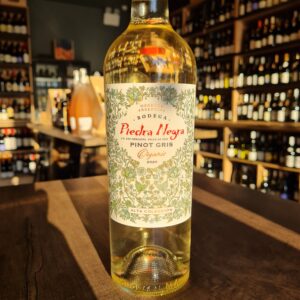 The Alta Colleción Pinot Gris from Bodega Piedra Negra can be considered an excellent ambassador of the unique Lurton wine style. A clear fruit, seductive grace and an unmistakable personality characterise this pure Pinot Gris.This wine fills the glass with a bright straw yellow with greenish reflections. The fragrant bouquet unfolds fresh fruity, aromatic notes of white peach and pear. The fresh, juicy taste brings lots of fruit and a lively acidity. Despite everything, this Argentine white wine is soft, full-bodied and wonderfully balanced, making it a racy and charming seducer. In the finish, the beautiful aroma lasts for a long time. This dry white wine from Argentina goes excellently with pasta with fish and seafood, monkfish with provencal herbs and spices or roasted pork.
The Alta Colleción Pinot Gris from Bodega Piedra Negra can be considered an excellent ambassador of the unique Lurton wine style. A clear fruit, seductive grace and an unmistakable personality characterise this pure Pinot Gris.This wine fills the glass with a bright straw yellow with greenish reflections. The fragrant bouquet unfolds fresh fruity, aromatic notes of white peach and pear. The fresh, juicy taste brings lots of fruit and a lively acidity. Despite everything, this Argentine white wine is soft, full-bodied and wonderfully balanced, making it a racy and charming seducer. In the finish, the beautiful aroma lasts for a long time. This dry white wine from Argentina goes excellently with pasta with fish and seafood, monkfish with provencal herbs and spices or roasted pork. -
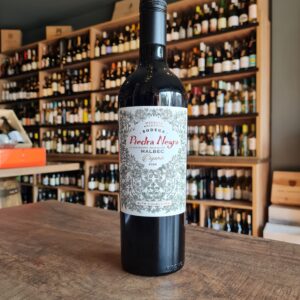 François Lurton vineyards are situated in the highlands (1,100 m) and semi-desert (poor alluvial gravels reminiscent of those of Pessac-Léognan), in the plains at the foot of the mountain range of the Andes: the Uco Valley. Thanks to his experience, acquired all over the world, he practices an environmentally friendly viticulture and produces extraordinary wines here that have a unique personality that combines freshness and concentration. Thanks to the climatic conditions of this high altitude desert and very draining and not very fertile alluvial gravel soils, the wines of the Uco Valley, and especially those of Los Chacayes, are quite unique and François Lurton vision was a success. This Malbec has a an outstanding quality/price ratio and it is definitely a contender not only for those summer barbecues but also for those cold winter nights. Pair it with Carpaccio, Paella, Iberian ham, red pepper stuffed with cheese and Hummus.
François Lurton vineyards are situated in the highlands (1,100 m) and semi-desert (poor alluvial gravels reminiscent of those of Pessac-Léognan), in the plains at the foot of the mountain range of the Andes: the Uco Valley. Thanks to his experience, acquired all over the world, he practices an environmentally friendly viticulture and produces extraordinary wines here that have a unique personality that combines freshness and concentration. Thanks to the climatic conditions of this high altitude desert and very draining and not very fertile alluvial gravel soils, the wines of the Uco Valley, and especially those of Los Chacayes, are quite unique and François Lurton vision was a success. This Malbec has a an outstanding quality/price ratio and it is definitely a contender not only for those summer barbecues but also for those cold winter nights. Pair it with Carpaccio, Paella, Iberian ham, red pepper stuffed with cheese and Hummus. -
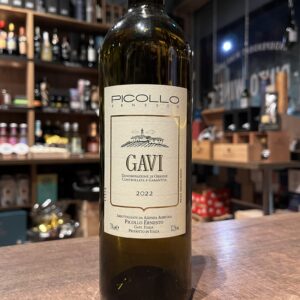 Picollo Gavi Ernesto is perched among the rolling hills that surround the town of Gavi. The climate here is much more mediterranean than in the north, benefiting from the constant maritime breezes, unique to the southern Piedmont. Picollo Ernesto’s vineyards sit near 260 meters above sea level in Rovereto di Gavi, one of the most prestigious area of the appellation. Our 16 hectares of vineyards are planted exclusively with Cortese, a hearty, high acid white varietal, perfectly suited for this area in northern Italy. Cortese thrives in difficult soil, dry climate, and full sun exposure, which Rovereto amply provides. Picollo’s vineyards are predominantly south-facing and the soils have a higher concentration of clay than marl, which allows for year-round water conservation, even in the peak of summer. Lorenzo Picollo founded the winery in 1945. The winemaking and day-to-day management was transferred to his son, Ernesto, and is now in the hands of his grandson, Gianlorenzo. Innovating along the way, Gianlorenzo continues to carry the family’s legacy forward with great success. Their lands are predominantly in the Rovereto zone, the historic Le Rive vineyards are over sixty years old instead their newest purchase of two hectares lies within the zone of Tassarolo. The grapes for all of Picollo’s wines are hand harvested. The winery itself has recently been modernized but the processes remain traditional, with sparing intervention in the winemaking and no artificial pesticides or herbicides used in the vineyards. With the intent of showcasing the Cortese in its purest form. All Gavi’s are fermented and aged exclusively in stainless steel. It is perfect with haute cuisine, ideal for fish dishes and aperitif
Picollo Gavi Ernesto is perched among the rolling hills that surround the town of Gavi. The climate here is much more mediterranean than in the north, benefiting from the constant maritime breezes, unique to the southern Piedmont. Picollo Ernesto’s vineyards sit near 260 meters above sea level in Rovereto di Gavi, one of the most prestigious area of the appellation. Our 16 hectares of vineyards are planted exclusively with Cortese, a hearty, high acid white varietal, perfectly suited for this area in northern Italy. Cortese thrives in difficult soil, dry climate, and full sun exposure, which Rovereto amply provides. Picollo’s vineyards are predominantly south-facing and the soils have a higher concentration of clay than marl, which allows for year-round water conservation, even in the peak of summer. Lorenzo Picollo founded the winery in 1945. The winemaking and day-to-day management was transferred to his son, Ernesto, and is now in the hands of his grandson, Gianlorenzo. Innovating along the way, Gianlorenzo continues to carry the family’s legacy forward with great success. Their lands are predominantly in the Rovereto zone, the historic Le Rive vineyards are over sixty years old instead their newest purchase of two hectares lies within the zone of Tassarolo. The grapes for all of Picollo’s wines are hand harvested. The winery itself has recently been modernized but the processes remain traditional, with sparing intervention in the winemaking and no artificial pesticides or herbicides used in the vineyards. With the intent of showcasing the Cortese in its purest form. All Gavi’s are fermented and aged exclusively in stainless steel. It is perfect with haute cuisine, ideal for fish dishes and aperitif -
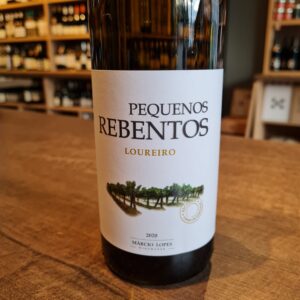 Márcio Lopes studied as an engineer, but cut his winemaking teeth working for two years with Vinho Verde master Anselmo Mendes in Melgaço. He then travelled to Australia where he made wine in Rutherglen and Tasmania, another cool climate region. He returned to Portugal in 2010 to start his own projects, including Pequenos Rebentos in Vinho Verde. He initially started working with Alvarinho and Trajadura (known as Albariño and Treixadura in Spain) from the sub-regions of Monção and Melgaço. These areas have a very particular microclimate, with slightly less Atlantic influence than the rest of the region - winters are cold with moderate rainfall and summers are hot and dry. During 2016 he also started to grow and vinify local varietals Loureiro. He now farms 5ha of vineyards, planted on granite, as well as buying some grapes from selected growers who also work in the same sustainable way and without herbicides. His winemaking is low intervention, he ferments using natural yeasts, and like many of our producers he believes that if the fruit is good enough he will make quality wines with balance that reflect his terroir. This seems to be working - his wines are distinctively fresh and vibrant, showing bright and clear typical variety aromas.
Márcio Lopes studied as an engineer, but cut his winemaking teeth working for two years with Vinho Verde master Anselmo Mendes in Melgaço. He then travelled to Australia where he made wine in Rutherglen and Tasmania, another cool climate region. He returned to Portugal in 2010 to start his own projects, including Pequenos Rebentos in Vinho Verde. He initially started working with Alvarinho and Trajadura (known as Albariño and Treixadura in Spain) from the sub-regions of Monção and Melgaço. These areas have a very particular microclimate, with slightly less Atlantic influence than the rest of the region - winters are cold with moderate rainfall and summers are hot and dry. During 2016 he also started to grow and vinify local varietals Loureiro. He now farms 5ha of vineyards, planted on granite, as well as buying some grapes from selected growers who also work in the same sustainable way and without herbicides. His winemaking is low intervention, he ferments using natural yeasts, and like many of our producers he believes that if the fruit is good enough he will make quality wines with balance that reflect his terroir. This seems to be working - his wines are distinctively fresh and vibrant, showing bright and clear typical variety aromas. -
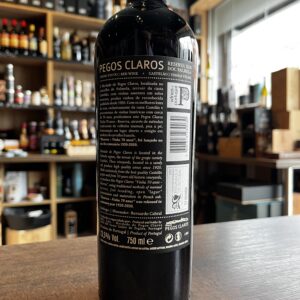
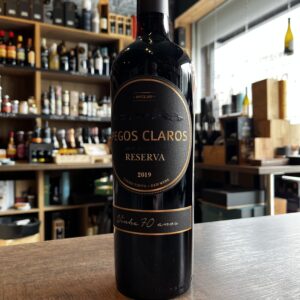 Producing quality wines since 1920, Pegos Claros Estate Farm was responsible in the 90s for the production of wines which became national and international references of the best wines produced as DOC Palmela. Harvesting done manually followed by fermentation with traditional foot treading in open “lagar”, oak ageing and exclusively from old vines. Produced from autochthonous red grapes of Castelão from Palmela Region, Pegos Claros Reserva is a red wine that reveals itself with defined maturity, with well-marked black fruits aromas in its aromatic bouquet, balsamic notes, and spices. It is a complex red wine with good acidity and a very elegant structure. Pairs well with grilled meat and roasted fish and meat.
Producing quality wines since 1920, Pegos Claros Estate Farm was responsible in the 90s for the production of wines which became national and international references of the best wines produced as DOC Palmela. Harvesting done manually followed by fermentation with traditional foot treading in open “lagar”, oak ageing and exclusively from old vines. Produced from autochthonous red grapes of Castelão from Palmela Region, Pegos Claros Reserva is a red wine that reveals itself with defined maturity, with well-marked black fruits aromas in its aromatic bouquet, balsamic notes, and spices. It is a complex red wine with good acidity and a very elegant structure. Pairs well with grilled meat and roasted fish and meat. -
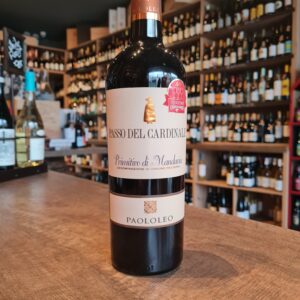 The Primitivo Paolo Leo Pass of the Cardinal is an ancient grape grape cultivated in Apulia, whose grapes present a very early maturation in comparison to other varieties, the name of which explains. One of the most interesting particularities of the Primitivo is the fact that, at a distance of only 20 days from the harvest, these grape vines are able to give a discreet second production of grapes. Traditionally, the fruits of this "second harvest" are used to increase the freshness of these ponderous wines, improving the deimosti acidity obtained from the first harvesting. The great body of the Primitivo di Manduria di Passo del Cardinale is able to enhance fine meats with a rigorous structure. Sliced beef and grilled steaks are the backdrop for a panoramic photograph. A touch of Puglia with orecchiette with chops sauce can be a gastronomic journey with which you can surprise your guests.
The Primitivo Paolo Leo Pass of the Cardinal is an ancient grape grape cultivated in Apulia, whose grapes present a very early maturation in comparison to other varieties, the name of which explains. One of the most interesting particularities of the Primitivo is the fact that, at a distance of only 20 days from the harvest, these grape vines are able to give a discreet second production of grapes. Traditionally, the fruits of this "second harvest" are used to increase the freshness of these ponderous wines, improving the deimosti acidity obtained from the first harvesting. The great body of the Primitivo di Manduria di Passo del Cardinale is able to enhance fine meats with a rigorous structure. Sliced beef and grilled steaks are the backdrop for a panoramic photograph. A touch of Puglia with orecchiette with chops sauce can be a gastronomic journey with which you can surprise your guests. -

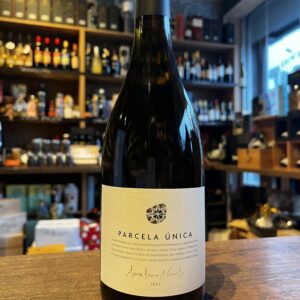 Born in Monção in Portugal’s Vinho Verde region, Anselmo Mendes fell in love with the Alvarinho grape at an early age and began making his first wines from the variety in 1988. Over the years he has consulted for many of Portugal’s top wineries and he also makes his own wines in Minho close to the border with Spain. Anselmo uses his decades of experience of working with Alvarinho to create a range of styles from crisp, light-bodied expressions to richer wines which are fermented and aged in oak barrels. A very versatile wine, it can be paired with stronger meat dishes or more complex fish, as well as shellfish and crustaceans. In the company of almond crusted cod on a bed of mashed potatoes or lamb chops with rosemary, Parcela Única wine in perfect harmony enhances fantastic flavors. Should be served between 11-13ºC. Technical sheet
Born in Monção in Portugal’s Vinho Verde region, Anselmo Mendes fell in love with the Alvarinho grape at an early age and began making his first wines from the variety in 1988. Over the years he has consulted for many of Portugal’s top wineries and he also makes his own wines in Minho close to the border with Spain. Anselmo uses his decades of experience of working with Alvarinho to create a range of styles from crisp, light-bodied expressions to richer wines which are fermented and aged in oak barrels. A very versatile wine, it can be paired with stronger meat dishes or more complex fish, as well as shellfish and crustaceans. In the company of almond crusted cod on a bed of mashed potatoes or lamb chops with rosemary, Parcela Única wine in perfect harmony enhances fantastic flavors. Should be served between 11-13ºC. Technical sheet -
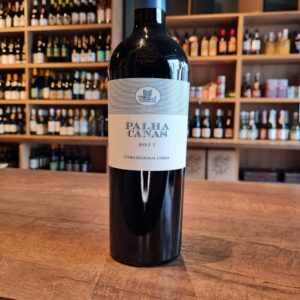 Aromatically very complex, it presents strong sensations of red fruits, jam and vanilla. Equally complex in the tasting, it evolutes to smooth velvety notes of red and ripe fruits, chocolate and oak ageing. Persistent and well-balanced aftertaste with tannins that evidence the structure of the wine and its longevity. Enjoy the Palha-Canas Tinto with hearty dishes from pork and beef, lamb and game. In addition, the wine goes perfectly with soft and hard cheese. You would have to stand on the terrace of the estate to understand why it is called Boavista (“fine view”). Your gaze would naturally wander over the vineyards which slope down into the valley in front of the house and then meet two hills on the opposite side where the lines of vines form an exciting geometrical pattern. It is a fine view indeed, this sight of the vineyards of Boavista. The Quinta de Boavista is situated right in the middle of the hills of the Estremadura wine-growing region, about fifty kilometres north of Lisbon. The close proximity of the nearby ocean provides for humidity and wind. The soil composition is a sandy clay. It is full of fossilized ocean deposits and right in front of the estate big petrified bones of a saurian were found which now adorn the terrace. The land has been owned for generations by the family of José Luis Oliveira da Silva. He is a banker by profession. For some years now he has focussed on wine-growing. He modernised the wine cellar, bought new barrels and recruited an able oenologist. He was among the first in Portugal who produced varietal wines from autochthonous grapes. The results are very exciting. The white Fernao Pires is a wine with attractive fruit aromas and with a distinct mineral note, the red Castelao and the red Tinta Roriz are wines that have concentration and a complex personality. This new generation of Portuguese wines gives you offhand inspiration.
Aromatically very complex, it presents strong sensations of red fruits, jam and vanilla. Equally complex in the tasting, it evolutes to smooth velvety notes of red and ripe fruits, chocolate and oak ageing. Persistent and well-balanced aftertaste with tannins that evidence the structure of the wine and its longevity. Enjoy the Palha-Canas Tinto with hearty dishes from pork and beef, lamb and game. In addition, the wine goes perfectly with soft and hard cheese. You would have to stand on the terrace of the estate to understand why it is called Boavista (“fine view”). Your gaze would naturally wander over the vineyards which slope down into the valley in front of the house and then meet two hills on the opposite side where the lines of vines form an exciting geometrical pattern. It is a fine view indeed, this sight of the vineyards of Boavista. The Quinta de Boavista is situated right in the middle of the hills of the Estremadura wine-growing region, about fifty kilometres north of Lisbon. The close proximity of the nearby ocean provides for humidity and wind. The soil composition is a sandy clay. It is full of fossilized ocean deposits and right in front of the estate big petrified bones of a saurian were found which now adorn the terrace. The land has been owned for generations by the family of José Luis Oliveira da Silva. He is a banker by profession. For some years now he has focussed on wine-growing. He modernised the wine cellar, bought new barrels and recruited an able oenologist. He was among the first in Portugal who produced varietal wines from autochthonous grapes. The results are very exciting. The white Fernao Pires is a wine with attractive fruit aromas and with a distinct mineral note, the red Castelao and the red Tinta Roriz are wines that have concentration and a complex personality. This new generation of Portuguese wines gives you offhand inspiration. -
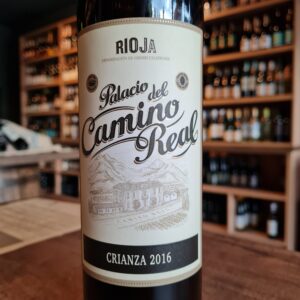 Palacio del Camino Real winery is located in the Najerilla Valley in Rioja. Isolated by the absence of railways and therefore the big wineries, the Najerilla Valley has maintained a tradition of small vineyards, consistently producing fruit of extraordinary freshness and quality. Palacio del Camino Real Crianza is a return to the essence of Rioja wines from the beginning of the 20th century in which Garnacha was the protagonist and a small percentage of white grapes could also be found. They are fresh, elegant, round and friendly wines. Palacio del Camino Real Crianza, is a red wine with an attractive ruby red color that impresses with its complex nose in which the nuances of its aging are perfectly integrated with the freshness and intensity of its chosen grapes. In the mouth it is a wine, it is a fresh, friendly, balanced wine with a long aftertaste.
Palacio del Camino Real winery is located in the Najerilla Valley in Rioja. Isolated by the absence of railways and therefore the big wineries, the Najerilla Valley has maintained a tradition of small vineyards, consistently producing fruit of extraordinary freshness and quality. Palacio del Camino Real Crianza is a return to the essence of Rioja wines from the beginning of the 20th century in which Garnacha was the protagonist and a small percentage of white grapes could also be found. They are fresh, elegant, round and friendly wines. Palacio del Camino Real Crianza, is a red wine with an attractive ruby red color that impresses with its complex nose in which the nuances of its aging are perfectly integrated with the freshness and intensity of its chosen grapes. In the mouth it is a wine, it is a fresh, friendly, balanced wine with a long aftertaste. -
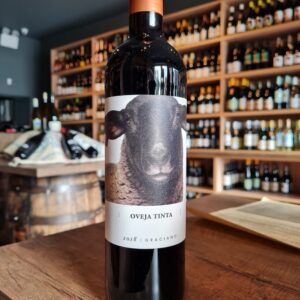 Graciano is one of Spain’s best kept wine secrets - a red grape with thick skins that is a tricky one to grow, which means there’s precious little of it about, even in the vineyards of the Rioja, where it is one of the traditional ingredients in the wine of the same name. This Biio-Organic wine has ruby red color with violet rims. On the nose aromas of wild flowers and ripe fruit, strawberry and blackberries. On the palate it is fresh and fruity, with a good level of acidity and moderate tannins.
Graciano is one of Spain’s best kept wine secrets - a red grape with thick skins that is a tricky one to grow, which means there’s precious little of it about, even in the vineyards of the Rioja, where it is one of the traditional ingredients in the wine of the same name. This Biio-Organic wine has ruby red color with violet rims. On the nose aromas of wild flowers and ripe fruit, strawberry and blackberries. On the palate it is fresh and fruity, with a good level of acidity and moderate tannins.


